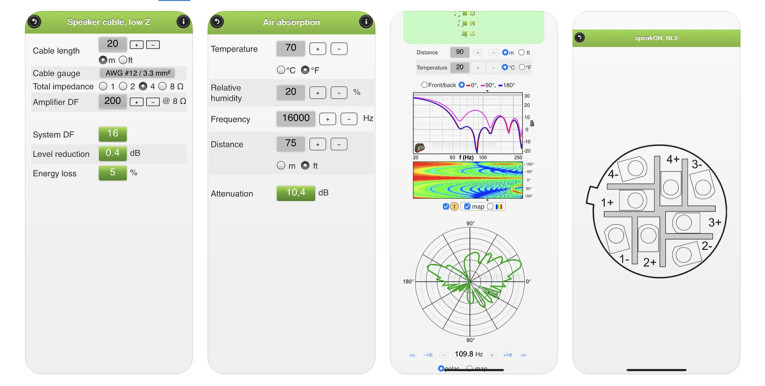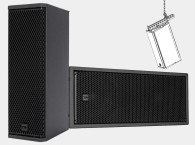
This latest release, with over 30 calculators, and full or reference information, and utilities, is once again free to download, thanks to a sponsorship from Italian audio manufacturer RCF.
PAcalculate version 1.3.2, available for Android and iOS devices, introduces powerful but easy to use in-line — end-fire and gradient — and broadside subwoofer array modeling, including an obscure 4-element topology originally proposed by Harry Olson, in mono or stereo deployments (with toe-out angles). The broadside section features independent mechanical and electronic arcing and steering of arrays, with the possibility of adding a gradient line, or several end-fire lines, a type of subwoofer configuration that has become widespread to achieve wide uniform subwoofer coverage with reduced stage leakage.
Frequency response graphs (front-to-back ratio as well as multi-angle responses), an isobar display, polar plots, and coverage maps provide a comprehensive set of graphics for an insightful analysis of design alternatives. Up to 96 elements (sound sources) can be simulated, 48+48 in L/R mode. A table is displayed with coordinates and settings (delay, polarity) that can be emailed for reference. A footer alerts the user if the specific configuration requires delay tuning on top of the results calculated (such as for gradient arrays).
The dedicated tool helps users get results quickly and easily. As an example, comparing between electronic and mechanical steering just requires entering the angle in the rotation input field of the broadside array calculator to get results for the former, and then clicking on a radio button to switch to results for the latter. The straightforward user interface also encourages 'what if' experimentation, such as trying different toe-out angles in left/right deployments. Settings can be combined such that the user could, say, simulate a L/R arrangement with two broadside arrays that are arced electronically (using delay) but also steered mechanically and complemented with a gradient line.

"RCF and PAcalculate go back a long way, since they were the very first sponsor for the app, so I's great to see such a respected logo on the most exciting update since it was first launched in 2014," says José Brusi.
PAcalculate can be downloaded for free. The app supports 8 different languages, including English, Spanish, Italian and Chinese (the app's largest user base).
Play Store (Android phones and tablets)
App Store (Apple iOS and iPadOS devices)
www.brusi.com
www.rcf.it







